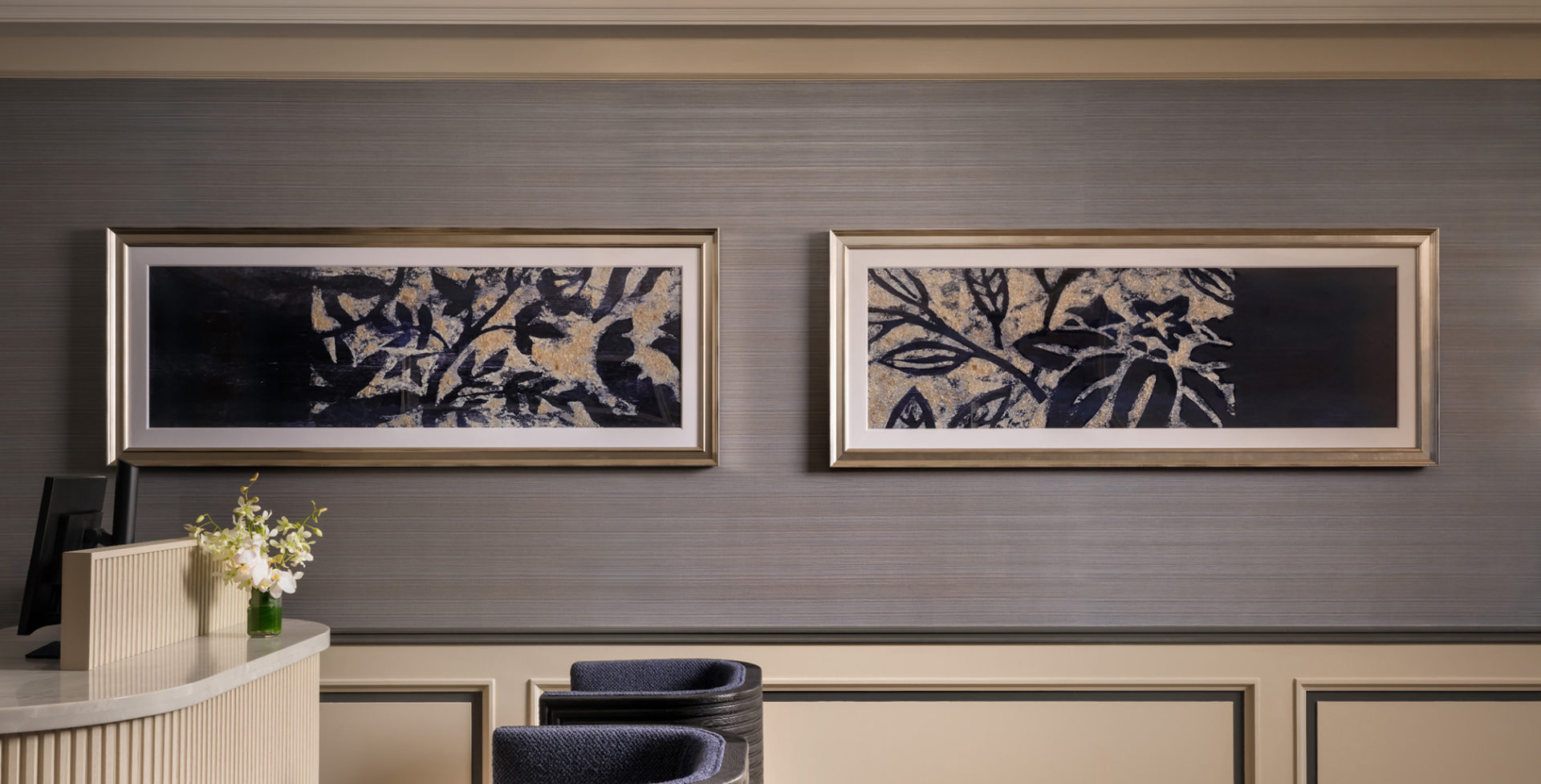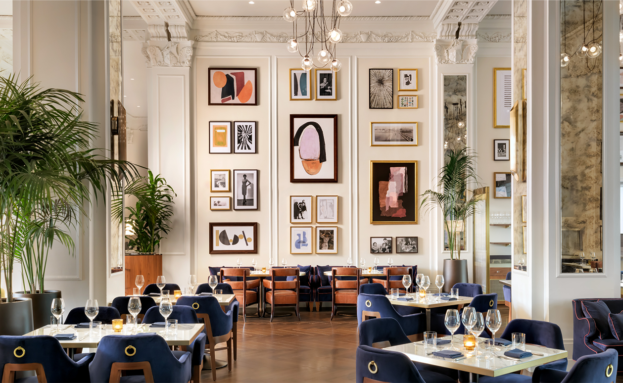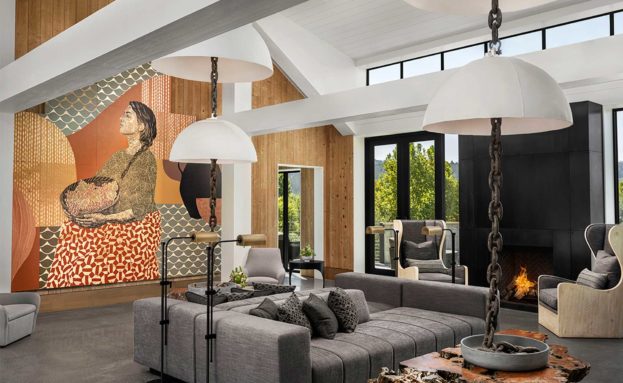The newly refreshed property of Fairmont Orchid Hawaii blends natural elements with cultural reverence to create a calm, grounded sense of place. Read our conversation with Jacob Royster, associate at hospitality design firm HBA San Francisco, on honoring the island through design and collaborating with KBAA.
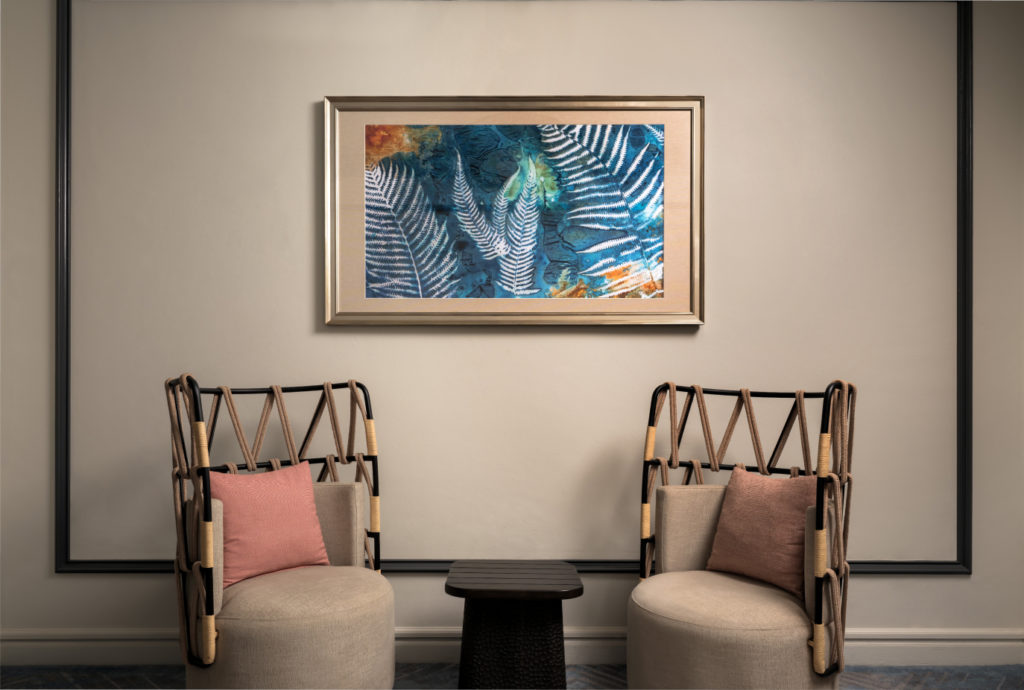
To begin, could you share a bit about HBA’s design philosophy and how your role contributes to translating that vision into reality?
At HBA, we believe design should tell a story—one rooted in locale, culture, and emotional resonance. Our role is to translate those layers into spaces that are both timeless and transformative. At Fairmont Orchid, we leaned into this philosophy by allowing the land itself—its textures, contrasts, and motifs—to guide the design narrative. As designers, we act as interpreters, crafting an experience that connects guests more deeply to their surroundings through materials, form, and creating an overall aesthetic atmosphere.
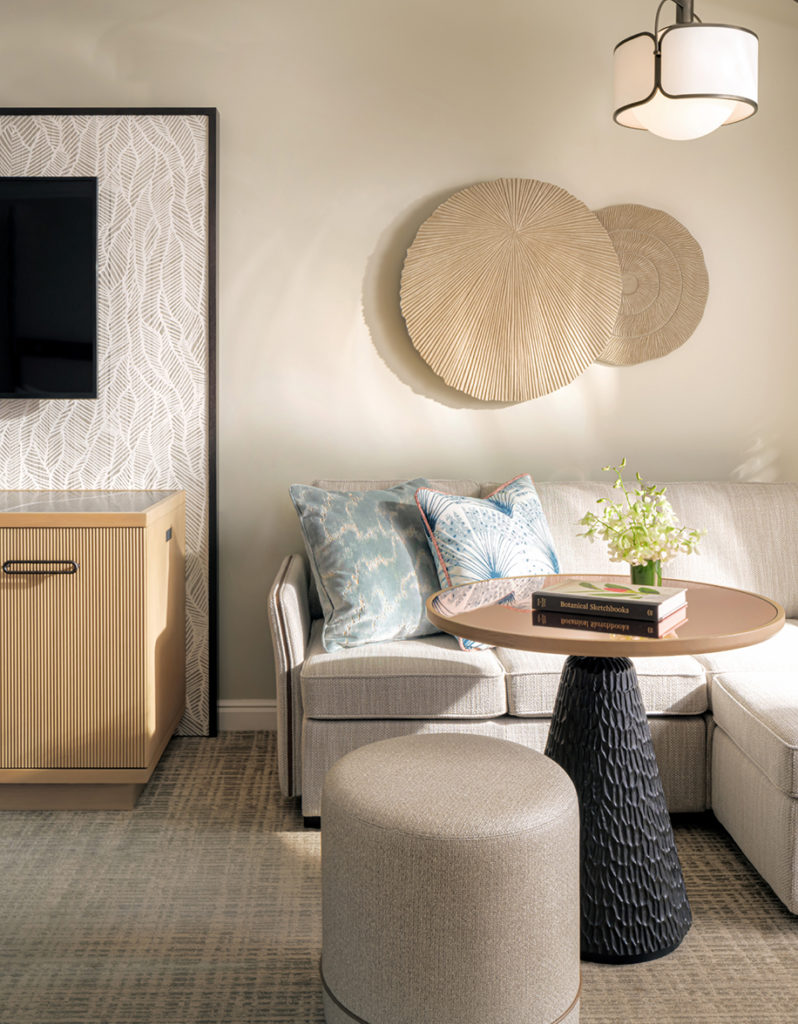
When working with an established property like Fairmont Orchid, what’s your team’s starting point for reimagining the space?
We begin with an analysis of the property’s legacy—its target market, its place in the community, and, in the case of renovations, the bones of the space. From there, we look to the natural and cultural context to inspire a renewed design language. At Fairmont Orchid, that meant embracing the dynamic tension between land and sea, black lava and white coral, history and modernity. The goal of the renovation and the resulting design language was not to erase the past, but to reveal something more authentic and elemental through thoughtful transformation of the property.
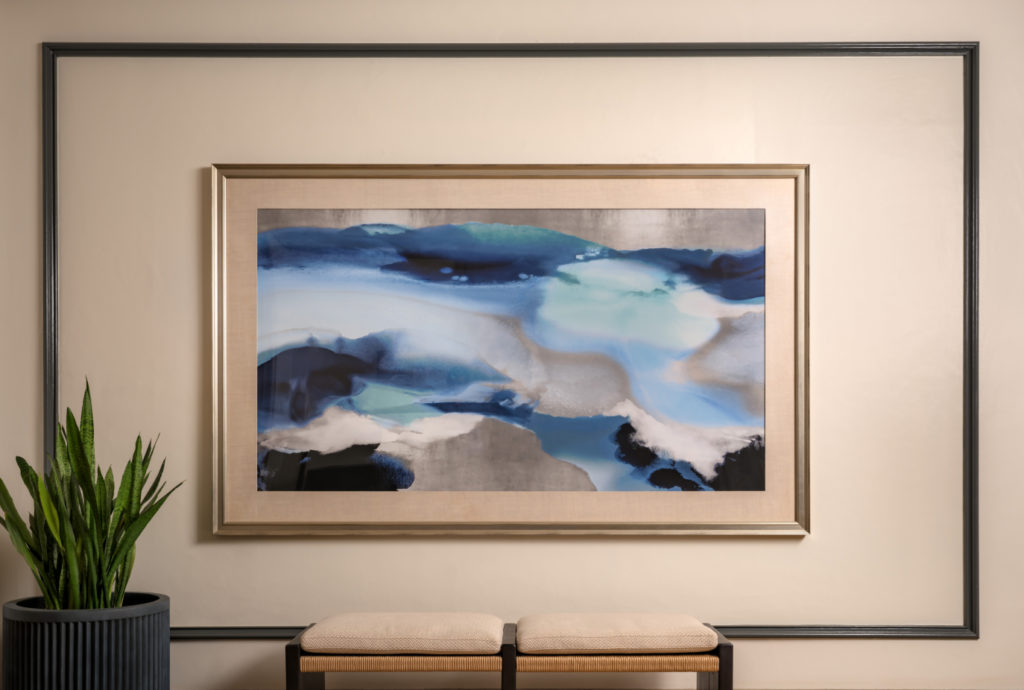
What made the Fairmont Orchid property stand out to you as a designer? Describe the experience and feeling you wanted to emphasize throughout the entire project.
Fairmont Orchid sits at a breathtaking intersection of natural power and serenity. The contrast of arid jet-black lava fields against crystalline waters immediately struck us—it felt both raw and poetic. We wanted guests to feel that same emotional duality: grounded in nature, but elevated by luxury. Throughout the project, we emphasized a rhythm of discovery and calm—a sense of place that unfolds gently, inviting guests to slow down and connect more deeply with their surroundings.
What colors, textures, and materials were used in this design direction. Describe key components of the design experience that you love.
We worked with a palette drawn directly from the island: volcanic blacks, sun-bleached neutrals, soft blushes, coral-inspired hues, and oceanic blues. Materials were tactile and storied—lava-like stone, carved wood, woven fibers, honed surfaces that catch light differently throughout the day. One of my favorite components is how texture plays a central role in the guestroom experience: from the fluted wood detailing to the shimmer of a patterned wallcovering behind the TV, each element is designed to surprise and delight guests.
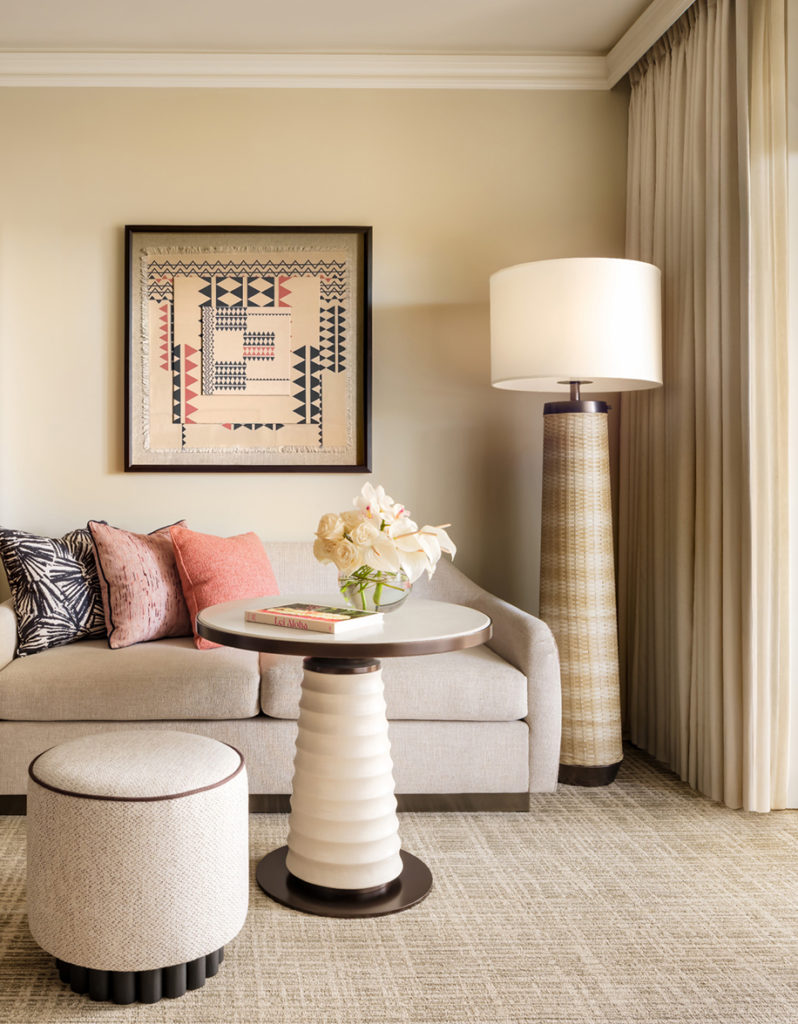
Fairmont Orchid’s location is undeniably breathtaking. How did the surrounding coastline and local culture influence your design direction?
The land itself was our north star. The design draws heavily from the island’s elemental contrasts—fire and water, rock and reef. The interiors now echo the spirit of the coast and the mana, or spiritual energy, of the place. Every material, every framed view, aims to honor the beauty and heritage of the Kohala Coast.
You collaborated closely with our art advisory team at KBAA throughout this project. How did the partnership help bring dimension and story to the property?
The collaboration with KBAA was essential in deepening the narrative of the design. They brought an artistic lens that mirrored our design language—abstract yet evocative, rooted in place yet visually fresh. Their ability to interpret themes of marine life, celestial movement, and native flora through contemporary and textural mediums added richness and layering to the interior environments. Together, we created moments that didn’t just decorate the space, but expanded the story it told.
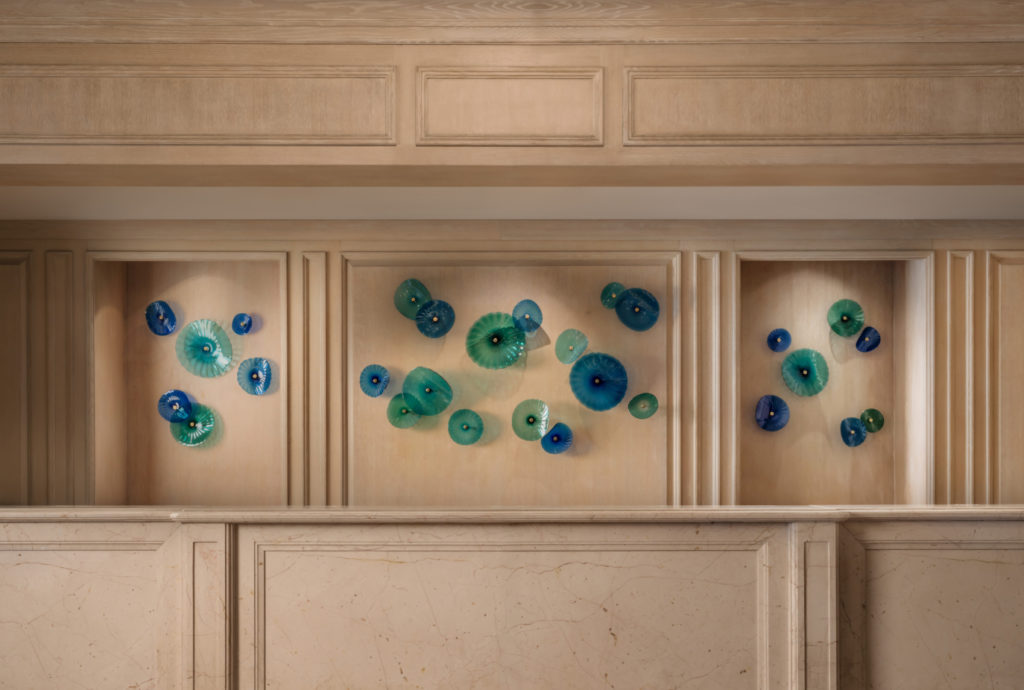
Describe one of your favorite art moments in the hotel and why it stands out to you.
My favorite art moments are found on the Fairmont Gold Floor, particularly within the guestrooms, where the design narrative becomes more intimate and elevated. The pieces evoke the island’s “golden hour”—those fleeting moments at sunset when the sky is bathed in hues of coral, rose, and amber. Some artworks layer geometric patterns reminiscent of traditional Hawaiian kapa, while others feature delicate compositions of shells arranged in rhythmic, almost meditative formations. These pieces feel both immersive and refined, quietly echoing the natural beauty and cultural richness of the islands. They embody the essence of the Gold experience—curated, warm, and deeply attuned to the rhythm of Hawai‘i.
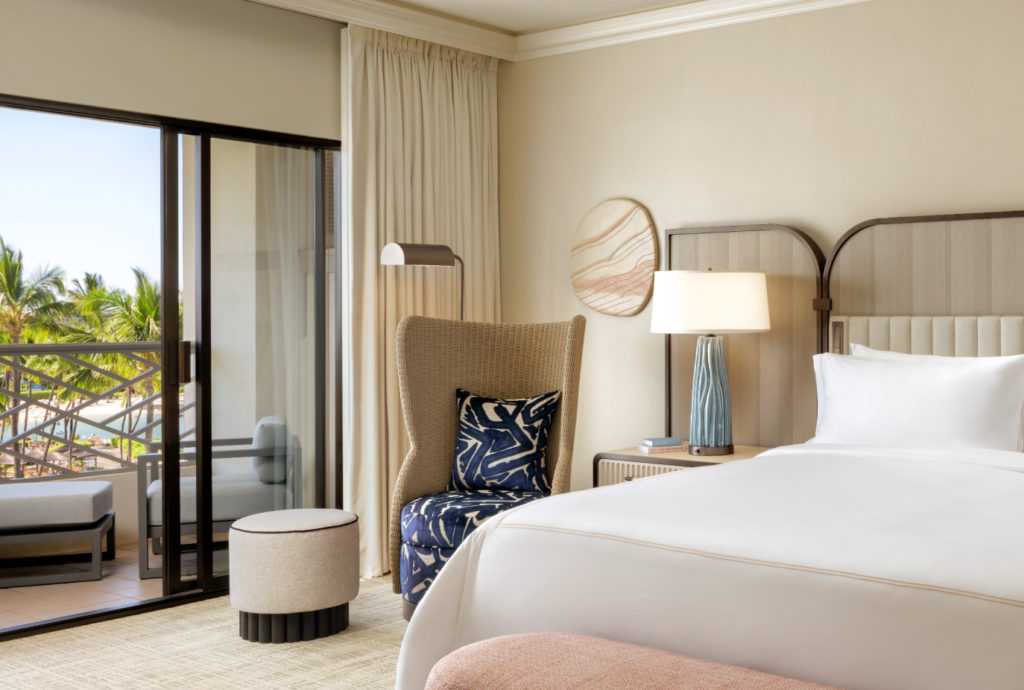
Design and art often work in parallel, but in this case, they feel fully intertwined. How do you think that synergy impacts the guest experience?
When design and art are truly integrated, the guest doesn’t experience them as separate layers—they simply feel immersed. At Fairmont Orchid, that synergy fosters a sense of flow. The art doesn’t interrupt the space; it enhances it, often whispering rather than shouting. That subtlety allows guests to feel something intuitive and emotional, even if they can’t quite explain why. It’s the difference between interacting in a space and being carried by its story—where every detail quietly deepens the sense of place.
Fairmont has a strong brand language within the Accor portfolio. How did you balance honoring that signature sense of luxury with bringing something distinctly Hawaiian to life?
Fairmont’s DNA is rooted in timeless elegance and thoughtful hospitality—values that resonate deeply with Hawaiian culture. Our goal was to infuse that luxury with a sense of place, layering in authentic materials, locally inspired textures, and a natural rhythm that feels true to the island. We honored the brand’s global refinement, but grounded it in something more soulful and site-specific—elevated, yet unmistakably Hawaiian.
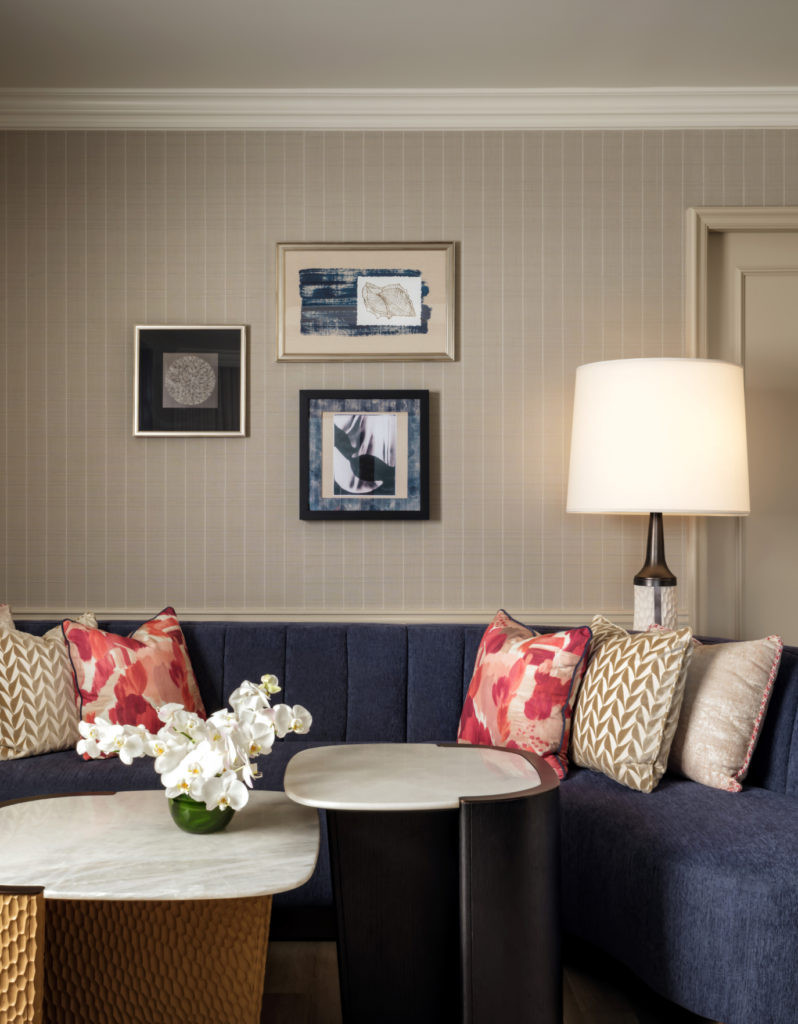
Are there design or art details that guests might not immediately notice, but that you feel add elevation or intention to the space?
One of the most thoughtfully crafted elements in the guestrooms—whether standard or Fairmont Gold—is the new seating vignette. While it may appear as a simple lounge moment, it’s actually a highly intentional space designed to accommodate the many ways a guest might use it. From relaxed reading to casual dining or quiet conversation, each element—from the pull-up table to the nested ottomans—was selected for flexibility and comfort. What makes it even more special is that each vignette is anchored around a piece of art, creating a quiet focal point that adds warmth, context, and a deeper sense of place. It’s a subtle yet meaningful shift that reflects how today’s guests live and connect—blending beauty with true usability.

What words come to mind when you think about the lasting impression Fairmont Orchid leaves on its guests?
Timeless. Restored. Nurtured. Fairmont Orchid leaves an imprint that’s both sensory and soulful. The experience is one of harmony—between luxury and landscape, tradition and transformation.
